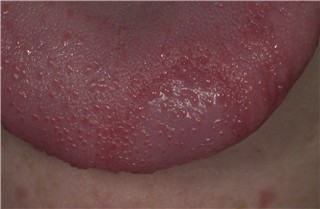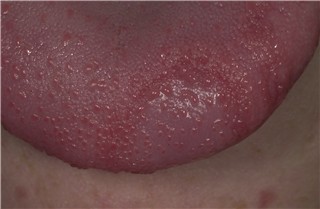Forum Replies Created
-
AuthorPosts
-
ASISpectatorExcept for the thermal aspect of course. Much like other metal restorative materials.
Andrew
whitertthSpectatorgreat job, great result, great pictures…how do u like the hoya as compared to the watewrlase…u can e mail me privately if u like whiteretth@aol.com regards
vinceSpectatorGood day everyone,
I just received my 980 Diodent….:-). I have a question for the forum.
Most patients are normal crest patients with a small % being low crest and even smaller% being high crest. With normal crest pts (ie. sounding to bone from FGM @ 3mm), we can do just about anything to them(cord, laser,electrosuge) and they heal rather predictably with where we placed our margins. It is the low crest (>3mm sounding to bone from FGM) patients that i am concerned about from an aesthetic standpoint. We know that FGM gum tissue will heal predictably to 3mm at midfacial and 4.5mm at interproximal with proper contact support for the papillae.
Using cord (double technique), i find my margins to be very predictable in aesthetic zones. I do my fair share of smile makeovers, with lasers should i watch to see if their is any apical migration of the FGM in these low crest pts, or can i go ahead with my impression?
Thanks for your help!Vince
Robert Gregg DDSSpectatorHi Al,
Very nice photo documentation, but especially your descripton and detail of what you used when.
It doesn’t matter about rinsing following activated tip with diode when the tissue is as healthy as the tissue was in this case. When the tissue is more edematous (larger capillary diameter–say 500-600 microns), THEN rinsing can cause “breakthrough” bleeding.
I always risnse to get the dried blood “bits” and tissue “crumbs” outta there so my impression is clean–yours is immaculate!
Pretty prep!
Bob
Robert Gregg DDSSpectatorGa Day Vince,
Aaaaah…..another biologic width (“BW”)question!!:cheesy:
I think the DioDent (from Hoya ConBio?) is 810nm, with the only 980 being the Ceralase from Biolitec. It does make a difference in the power settings you would be using.
I’m a little confused. You said, “It is the low crest (>3mm sounding to bone from FGM) patients that i am concerned about from an aesthetic standpoint.”
Did you mean working with greater or less BW when you said “low crest”?
In general, though, if you are NOT reducing the tissue back towards the crestal bone (i.e. removing connective tissue “CT” or attached gingiva), and your BW is adequate, then you don’t need to worry about using the laser for tissue troughing or “retraction”.
Once you remove CT, then you may need to evaluate before taking an impression–like you would with a blade. Then when you get comfortable with your results, you will know when you can take an impression, and when you can know the margin will stay where you left it.
You do need to know your laser parameters and be quick and sure so as to not overheat the thin tissues on the facial.
Al will tell you 1.0 watt, CW, activated tip….Al?
Bob
Robert Gregg DDSSpectatorAndrew,
Thanks for the kind words.
We have had enough time over the past 12 years to run in to just about ever challenge a clinician can face with these devices and the peripherals.
Typically, manufacturers make the “box”, and pay no attention to the delivery system or other details. Well, clinicans all know that if we can’t apply the effects of our neat technology to the hard-to-get places in the mouth WHAT GOOD IS IT?! Manufacturers have pretty much felt their job was over once the “hard” stuff of building the laser was completed.
At MDT (because we’re clinicians) we say, “OK! That’s a nice start”. “Now what do we do about handpieces, delivery systems, fiber diameters (energy densities), fiber quality, training, clinical applications, proper parameters, value to the clinician, results for patients……” In reality, we build a laser AFTER we have asked & answered these questions to our satisfaction first.
We got together with Glenn Monday, for drinks and laughs. Had a great time. He plied me with alcohol! Forced me to order more beer. I brought along a few generations of Trueflex handpieces for Glenn to inspect and see how they have evolved over the years. I came up light in my count when I got back:confused: I’m sure I must have put it in another coat pocket?!
The next day I woke up and I had this urge to iron my wife’s cloths and make her breakfast…….and drive to Santa Barbara……(Glenn will explain next week, as I’m sure I’ll be hearing about it for a while…..)
Thanks again Andrew!
Bob
Robert Gregg DDSSpectatorHi Andrew,
Near-infra-red wavelength laser are transparent through water, and has no absorbption (or extremely weak–say 40+mm) in the water in the tissue. That includes 810-980-1064-1500nm. I know some folks say 980 is highly absorbed in water, but I strongly disagree in spite of the charts that have been used to support the proponents arguements.
We have held 980 up to a zip-lock bag of water, and fired the beam into an infra-red camera–NO attenuation was detected by the camera. If 980 was highly absorbed, the camera could not have detected ANY light. Imagine shining a 1064 to a black piece of paper or baggie of black ink with a near infra-red camera–nothing would get through to the camera.
Biologic interactions with live human tissues are VERY complex. In fact, once the tissue is “hit” with a laser (or electrosurgery) it is NO LONGER the same viable tissue constituents that you started with. So what is being interacted with at that point? Heat altered proteins.
The measurements and data collected by some investigators are looking at DEAD tissue and lab experiments that do not necessarily translate to live human tissues.
When we get water to BOIL in our patient’s tissues using near infra-red lasers (not erbiums), it is secondary to absorbption in another substance (the hot glass of the “activated” fiber) or tissue components (blood pigments or other tissues, or proteins).
Human tissues are VERY tolerant of the abuses we impose on them. The “heat sink” (the ability to dissipate heat quickly to body temperature) is great in the area around the implant due to the thickness of bone. There is a limit to that heat sink, but one would have to deliberately hold the fiber in one place for too long with these lasers.
Bob
(Edited by Robert Gregg DDS at 10:49 am on June 19, 2003)
ASISpectatorThanks, Bob.
There is so much more than the simplified electromagnetic spectrum chart that shows different absorption of chromophores, isn’t there?
Andrew
Kenneth LukSpectatorBob,
I’m confused. Please show me the ‘light’ end of the tunnel and forgive me for asking an ignorant question.NIR is transparent through water and is not absorbed in tissue. When laser hit tissue, the interaction is ‘Heat altered proteins’. Does this not contradict?
Ken
(Edited by Kenneth Luk at 12:49 pm on June 18, 2003)
Kenneth LukSpectatorHi Al,
Excellent margin. I think technicians should pay you for making their life easier and more enjoyable .
Did you replace the composite before crown prep?
Would you consider replacing the MO on the 2nd molar to achieve better contour and contact point. Also to avoid replacing it in the near future.
Ken
SwpmnSpectatorYes, the DioDent is a 810 diode from HOYA ConBio used with an activated fiber for contact ablation and hemostasis. The SmilePro 980 nm diode(formerly Ceralas) from Biolitec is supposedly used in a non-contact mode for “optical hemostasis” and ablation of soft tissues. From Biolitec:
The 980 nm Wavelength
A major benefit of the 980 nm lasers’ wavelength is the ability to cut and coagulate optically – not via a ‘hot tip.’ Because absorption in hemoglobin and water is optimal at the 980 nm wavelength – as identified by physics and photobiology – these lasers’ fiber tips do not require conditioning. As a result, laser light cuts and coagulates with these lasers – not a “hot tip.”
Therefore, many lasers use conductive heat via a ‘hot tip’ to prevent bleeding while the 980 nm lasers coagulate optically, providing hemostasis that is much more durable, solid, and beneficial for patients. Also, because laser light cuts the tissue, when ablating tissue, the 980 nm lasers maintain a controlled depth of penetration and essentially eliminate collateral tissue damage. Without charring tissue, biolitec’s 980 nm lasers minimizes post-operative swelling and discomfort.
Unlike other wavelengths, the 980 nm wavelength is neither absorbed too much nor too little in water and hemoglobin – enabling precise, char-free soft tissue ablation and hemostasis.
So Vince, I’m not exactly sure what laser you are using?? Even if I did, wouldn’t be much help as I just got my 810 diode but I’ll keep your question in mind as I learn with you. “Low crest” means greater “biologic width”, right? With my radiosurge unit, recession always seemed to depend on whether the facial attached gingiva was thick and fibrous vs. thin and friable.Al
SwpmnSpectatorQUOTEDid you replace the composite before crown prep?
Would you consider replacing the MO on the 2nd molar to achieve better contour and contact point. Also to avoid replacing it in the near future.
KenYes that is a new composite buildup, the old composite was bombed underneath and yes the MO amalgam on #31 looks like crap and I should have placed a new composite.
Amazing how pictures give you a different perspective isn’t it? Dr. Glenn knows a thing or two.
Thanks,
Al
dkimmelSpectatorJust got done using family as test subjects. 12 y/o niece with recurrent geographic tongue. Very painful. Just caught her out break at the beginning stages. Did .25 W with 11% a and no water. Just painted the tongue in a defoused mode. Did not even get the whitish painting of the tissue. The pain is gone! One happy kid.
Preop


Post opDavid
(Edited by dkimmel at 9:21 pm on June 18, 2003)
(Edited by dkimmel at 9:22 pm on June 18, 2003)
(Edited by dkimmel at 9:23 pm on June 18, 2003)
SwpmnSpectatorHmmm. Good idea, never thought of geographic tongue.
How far were you defocused? 5mm?
Al
ASISpectatorRight you are, Allen.
Thin biotype has a greater tendency for recession due to delicate and friable soft tissue and the underlying thin buccal plate. Whereas, thick biotype is bulkier and more fibrous in nature hence less likely to recede after laser or nonlaser troughing.
Any input from Andy, please?
Andrew
-
AuthorPosts
